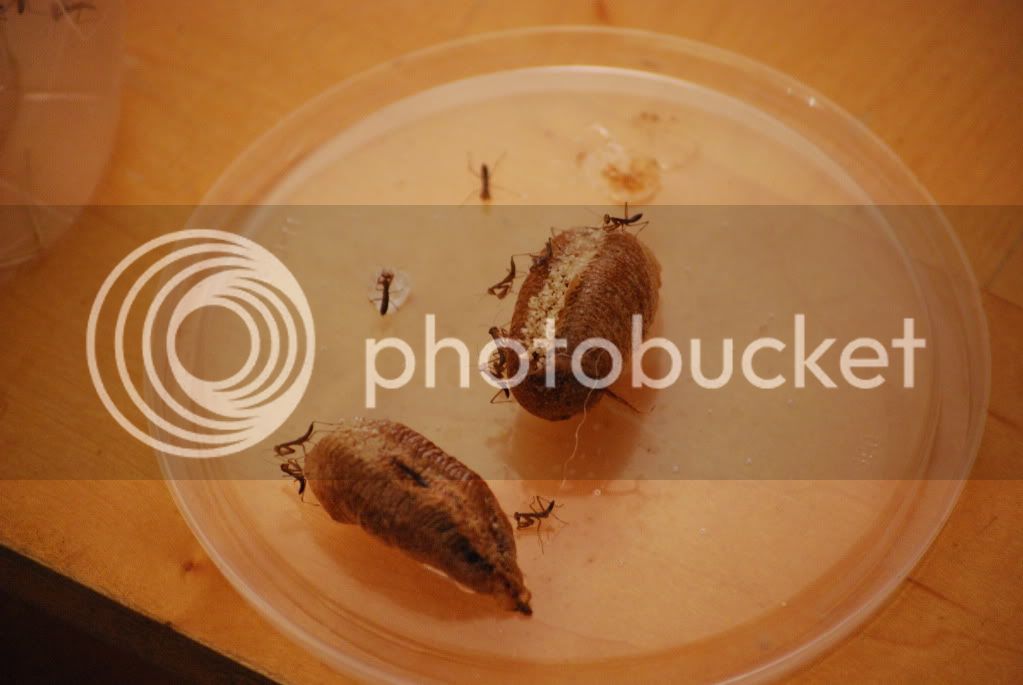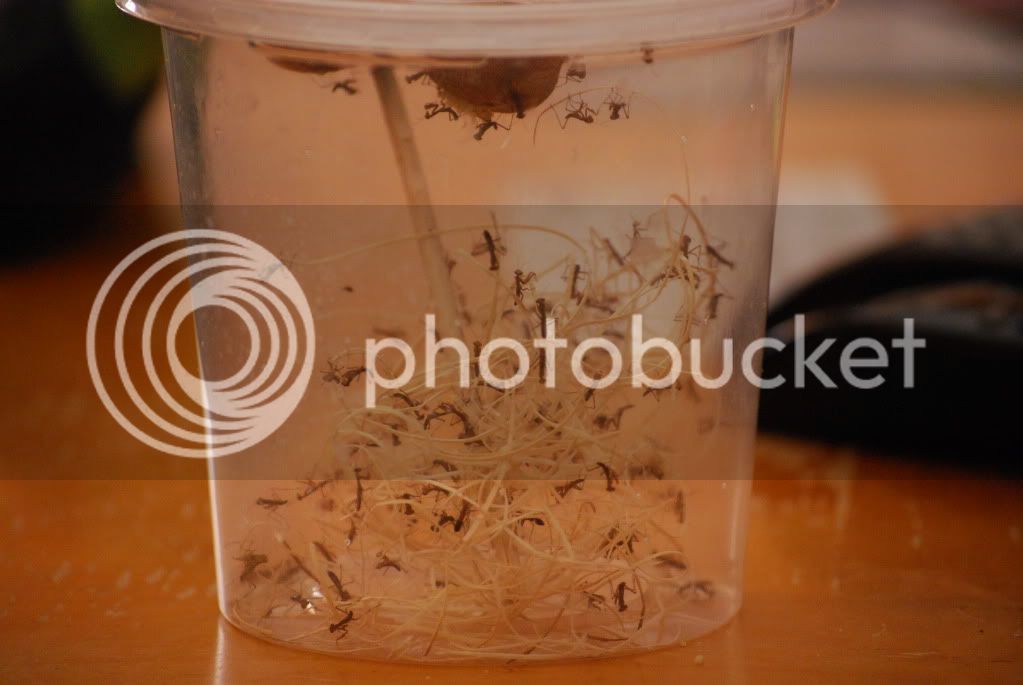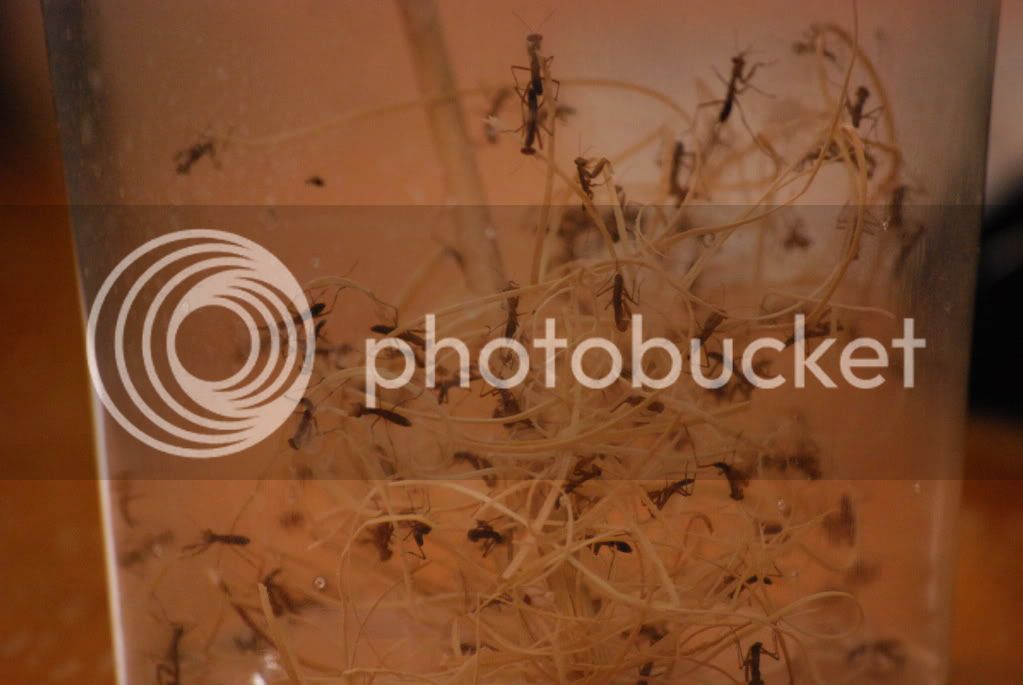sbugir
Well-known member
Well, it's spring, and that means babies of all sorts.
Yesterday my M. religiosa ooth began to hatch in just 3 weeks after incubation . I was hoping to release them in the next month when I thought they would hatch... Nonetheless they are very cute, and are by far the most awesome looking nymph I have ever seen. The heads are crazy, they literally look like the typical cartoon alien-types.
. I was hoping to release them in the next month when I thought they would hatch... Nonetheless they are very cute, and are by far the most awesome looking nymph I have ever seen. The heads are crazy, they literally look like the typical cartoon alien-types.
Anyway, I've heard that these are very difficult to take care of due to them being a rather weak species. So, I figured I would try to start a blog/breeding diary thingy to see what makes these guys seem so difficult.
Half of these mantids will go back to where I found them, and the other half will be mine to raise and keep up with this log.
To begin with an update I figured I would show some pics with some babies on the ooth... (these are poor pictures, sorry).



The hatching began on April 11th, approximately only 20 nymphs hatched.
April 12th hatched about 50... and only half of the ootheca is hatched with another ready to go.
Diapause began on November 1st, and they were taken out March 21st to begin incubation.
Yesterday my M. religiosa ooth began to hatch in just 3 weeks after incubation
Anyway, I've heard that these are very difficult to take care of due to them being a rather weak species. So, I figured I would try to start a blog/breeding diary thingy to see what makes these guys seem so difficult.
Half of these mantids will go back to where I found them, and the other half will be mine to raise and keep up with this log.
To begin with an update I figured I would show some pics with some babies on the ooth... (these are poor pictures, sorry).



The hatching began on April 11th, approximately only 20 nymphs hatched.
April 12th hatched about 50... and only half of the ootheca is hatched with another ready to go.
Diapause began on November 1st, and they were taken out March 21st to begin incubation.



